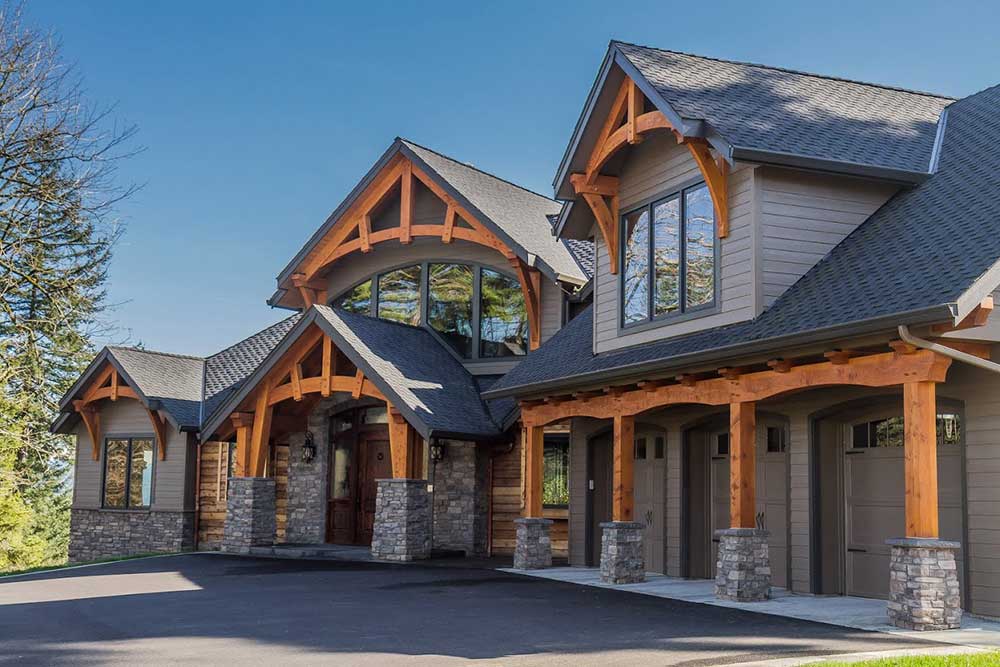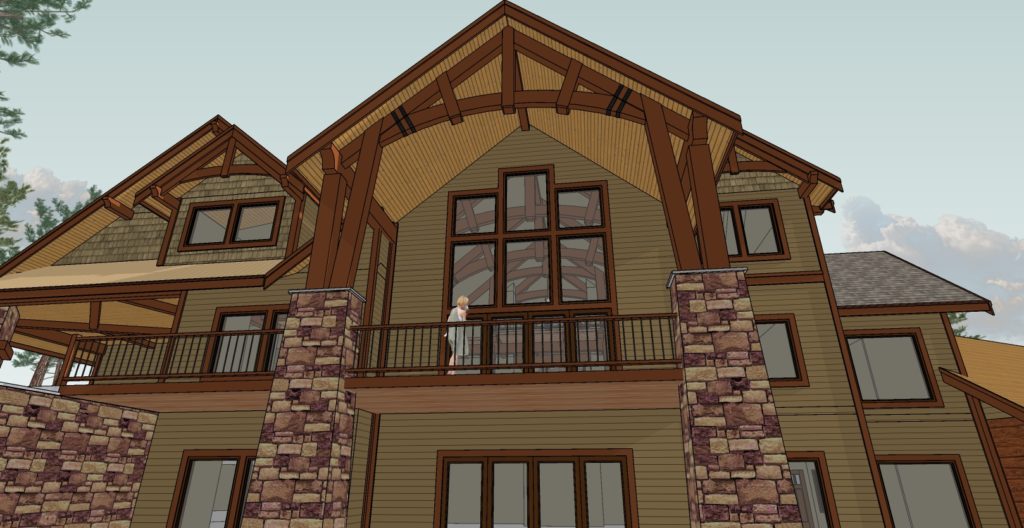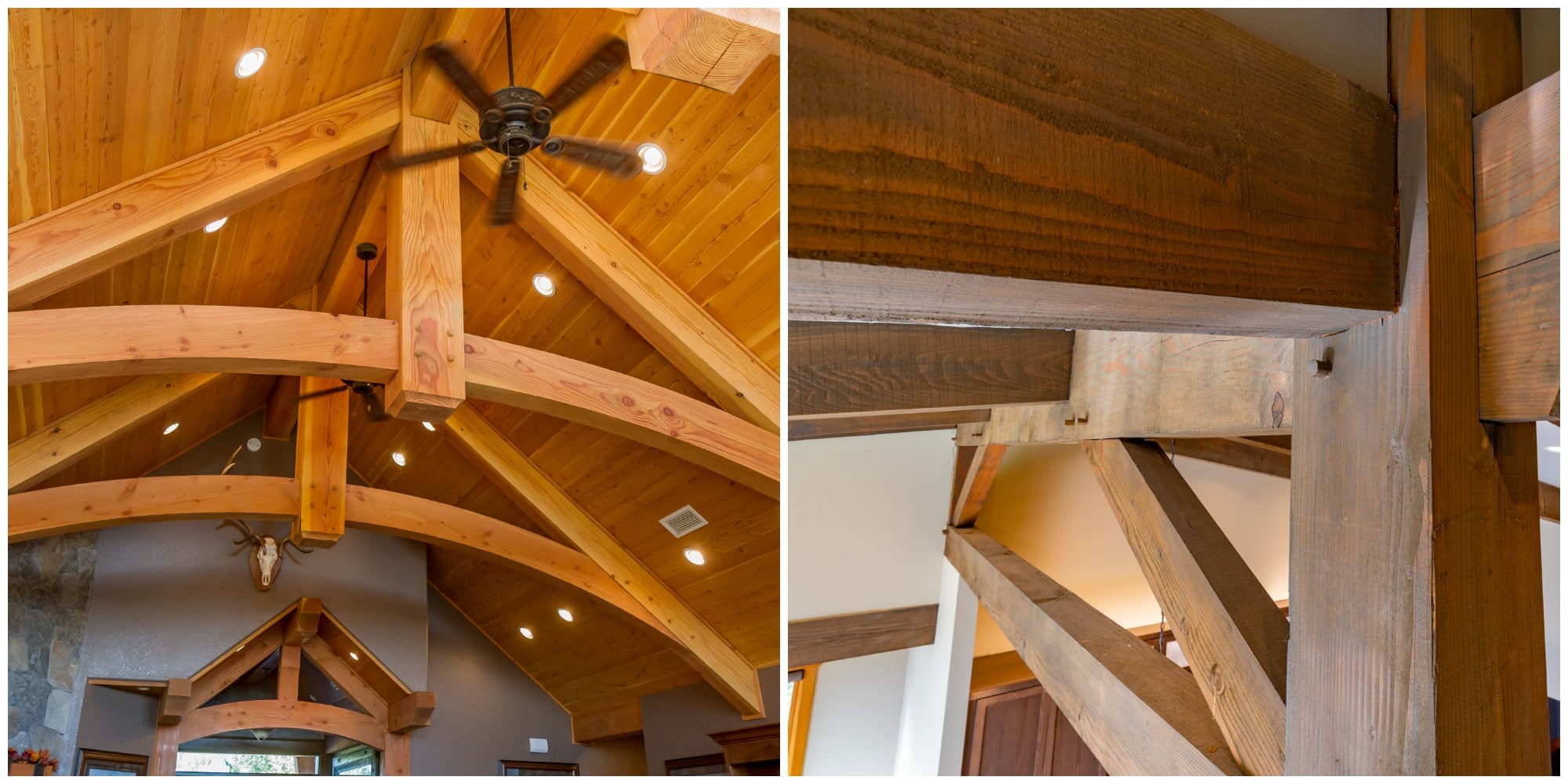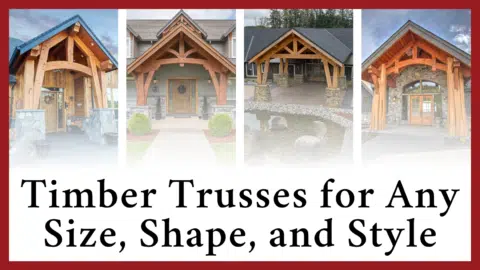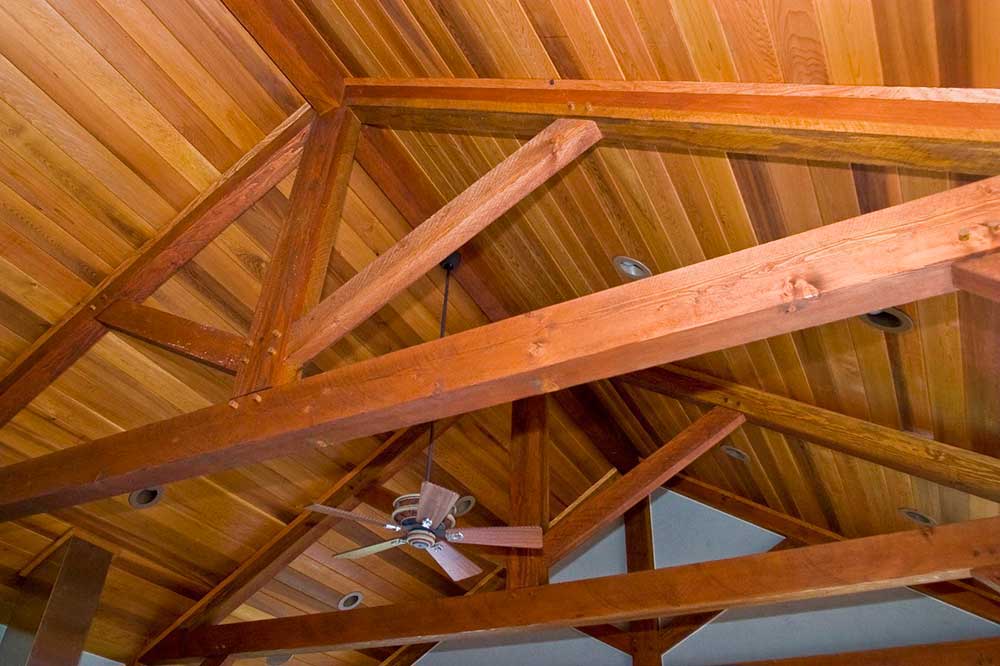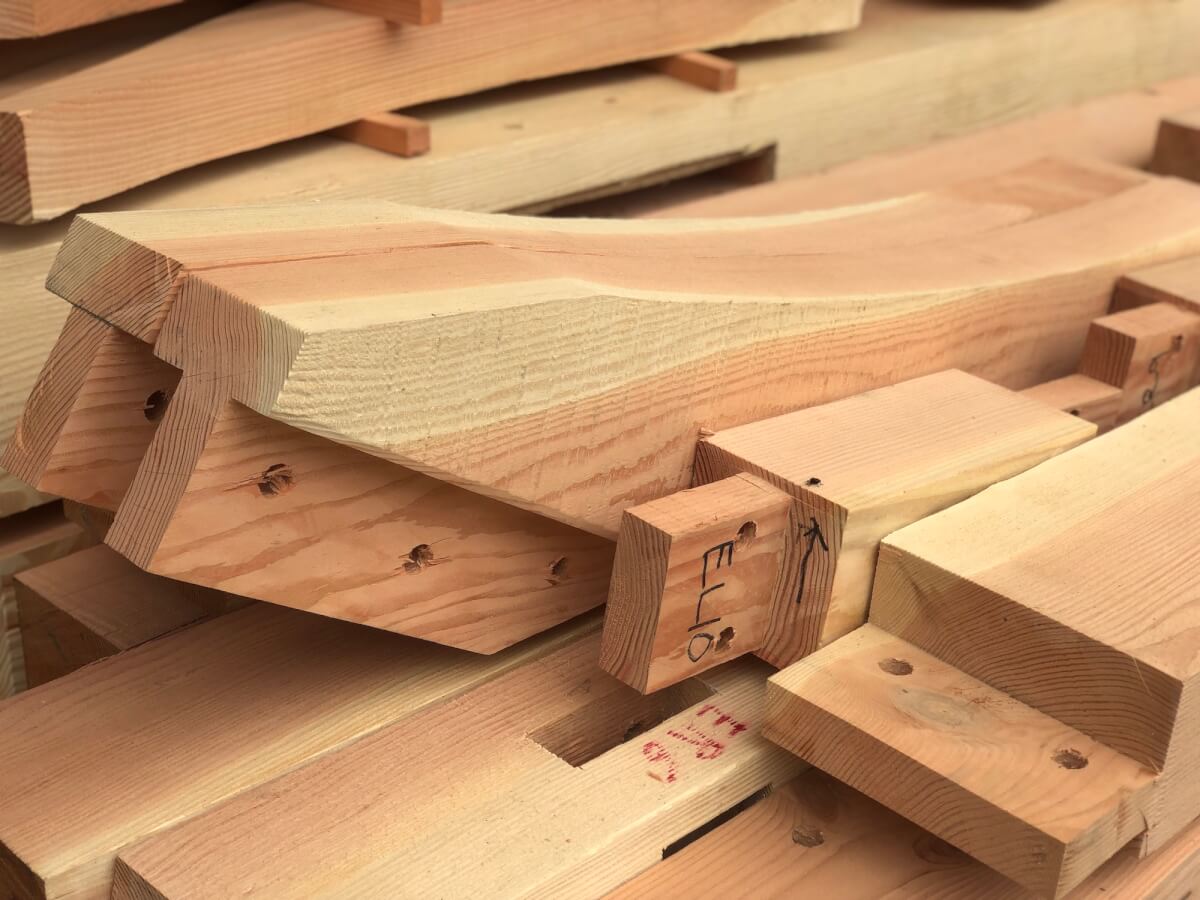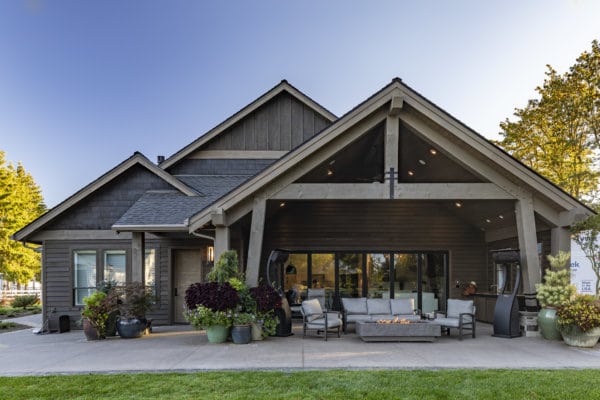
Mono truss, Box truss and Multi Web truss
These three trusses are uniquely different, but they share a lot of overlap from a stylistic perspective. So for your convenience, I’ve grouped them together. How do they share style overlap? Answer: With rustic, modern and industrial influence. Let’s break down these three adjectives one at a time.
Rustic – Even if you were to paint all of your timbers bright white, you would still have some rustic influence simply from the geometry and presence of the square boxing shapes punctuating otherwise flat surfaces in a structure. Geometrically, sharp straight lines and edges represent strength. Curves represent elegance. For example, compare posts that are embellished with curves or softened in some way with standard straight posts. Or consider the change in appearance when round Geco-Roman columns replace square posts. There is just something raw and basic when the “bones” of a structure are visibly celebrated rather than hidden behind drywall. In general timber framing or post and beam construction represents warmth, belonging and security.
Modern- By definition, Modern is always changing because it is keeping up with the times, always on the cutting edge of what is possible with design. One hallmark of Modern style is, SURPRISE! Modern design uses surprising, charming or good looking ways to combjne different building materials to create a unique look and feel. Another hallmark of Modern style is mixing old and new. I once seen bright red heating ducts suspended from old multi-web timber trusses in a commercial restaurant space. This used both of these Modern design principles.
The Box truss was used for a lot of old commercial construction and subsequently many penthouses and offices display a modern style of old and new. The Mono truss plays well with simple, single plane roofs sloping outwards towards a view or up to capture light.
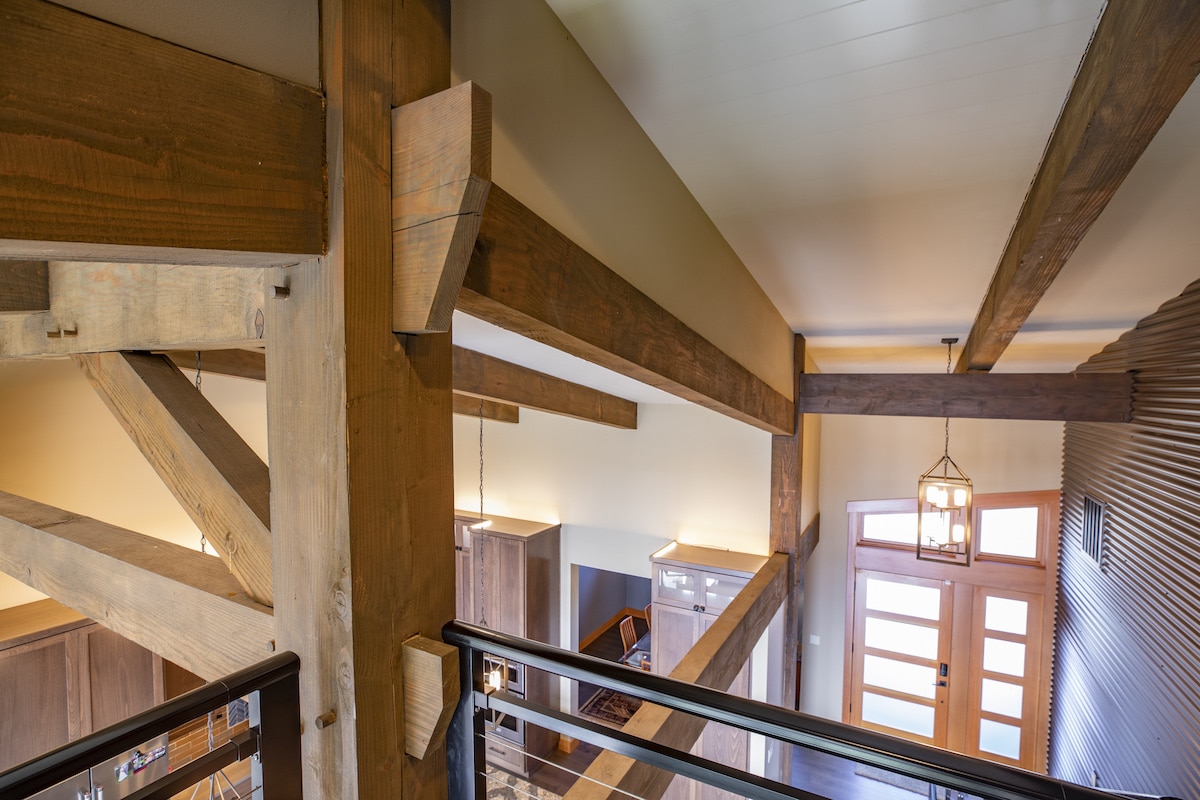

Industrial- We have already touched on ho w some of the Industrial look has evolved in discussing the Modern influence above. All three of these trusses have what you might call unorthodox beauty. You see unorthodox or unique beauty with a lot of movie stars… you might say perfection can get boring! This concept is the driving force behind the use of raw industrial elements and features used in Modern designs today.
While these three trusses capture imperfect beauty on a bigger scale, you can also use rough industrial touches on the trusses themselves. Such as rusted metal work or heavy cables with crude functional clamps. You are only limited by your creativity accent!
Lastly let’s talk about some Span limitations. The multi Web truss has the biggest load capabilities, precisely because of the many truss webs. Many old warehouses have spans of 60-80′ and have held up well. Today’s engineering criteria may limit the span or require beefier timbers. The Box truss capacity is limited by its height. The taller the Box truss the greater it span capacity. I remember one project which had a relatively light snow load. It had many 30″ tall Box trusses 4′ apart with a span of 28′ or 30′. With the webs at such a low angle, metal connections were required to address the big tension loading. The Mono truss has similar constraints as the Box truss. Sometimes the Mono truss is used in a unique way. A big supporting Mono truss as a centerpiece underneath and upwward sloping ridge/hip has produced a great look. So maybe one of these 3 trusses will work for you? Or maybe just a creative piece of what you’ve learned here? There are many things to discover and utilize regarding imperfect beauty!
Industrial- We have already touched on ho w some of the Industrial look has evolved in discussing the Modern influence above. All three of these trusses have what you might call unorthodox beauty. You see unorthodox or unique beauty with a lot of movie stars… you might say perfection can get boring! This concept is the driving force behind the use of raw industrial elements and features used in Modern designs today.
While these three trusses capture imperfect beauty on a bigger scale, you can also use rough industrial touches on the trusses themselves. Such as rusted metal work or heavy cables with crude functional clamps. You are only limited by your creativity accent!
Lastly let’s talk about some Span limitations. The multi Web truss has the biggest load capabilities, precisely because of the many truss webs. Many old warehouses have spans of 60-80′ and have held up well. Today’s engineering criteria may limit the span or require beefier timbers. The Box truss capacity is limited by its height. The taller the Box truss the greater it span capacity. I remember one project which had a relatively light snow load. It had many 30″ tall Box trusses 4′ apart with a span of 28′ or 30′. With the webs at such a low angle, metal connections were required to address the big tension loading. The Mono truss has similar constraints as the Box truss. Sometimes the Mono truss is used in a unique way. A big supporting Mono truss as a centerpiece underneath and upwward sloping ridge/hip has produced a great look. So maybe one of these 3 trusses will work for you? Or maybe just a creative piece of what you’ve learned here? There are many things to discover and utilize regarding imperfect beauty!
Arch Truss
Technically this truss should be called by it’s specific name with arched members. i.e. A king truss with arches or a queen truss with arches etc. But who has time for that, with everyday communication? Clients and professionals alike, latch on to the easiest name available. The clear winner has been simply Arched Truss!

